Results 1 to 10 of 31
-
05-05-2013, 10:17 PM #1
 A primer on genuine tortoiseshell
A primer on genuine tortoiseshell
Hey all, I'm nowhere near an expert on this but I've handled a good amount of it and thought I'd share what I know about tortoiseshell, with the hopes to have some discussion / hear what everyone who likes the stuff has to say. I know there's a lot of discussion on it every now and then and wanted to give some examples and concentrate everyone's knowledge into a thread. I won't go into the material properties or production, you can find that on google. What I do want to talk about is what it looks like on razors and some ways to tell it. It's on the rare side, but you do come across it. I have a feeling I'll run out of picture space, so I'll call this part 1.
This is a good resource for starters: TORTOISESHELL: Real or fake? How to tell the difference
Probably the most ubiquitous tortoise-like materials out there are synthetics. Most here have probably heard of the hot-pin test. This is a definitive way to separate a plastic from at least a material of keratin / animal origin. One of the easiest non-destructive tests just takes a second - bug bites. Real tortoise is susceptible to dermestid damage just like horn is, and if it has been a meal, you will see characteristic bites, sometimes tiny, sometimes huge:
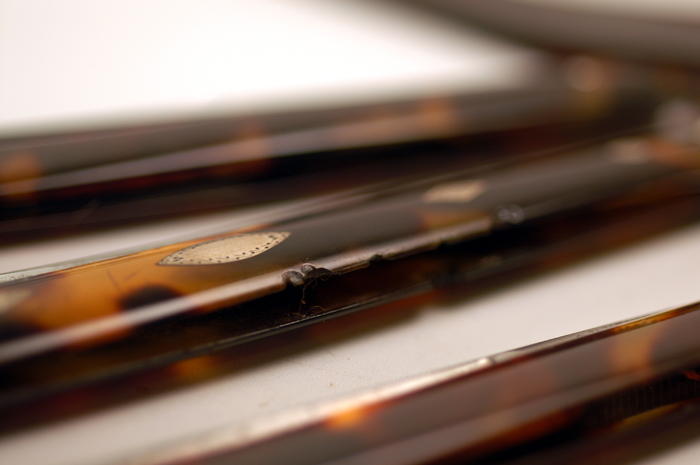
For comparison, here's celluloid faux-tortoise and a lucite example (bottom left), courtesy of Zak:
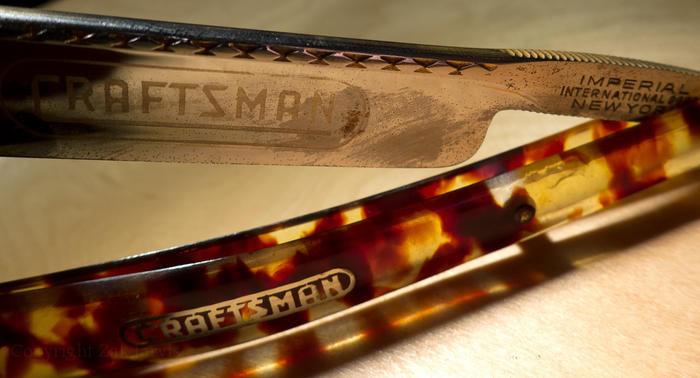
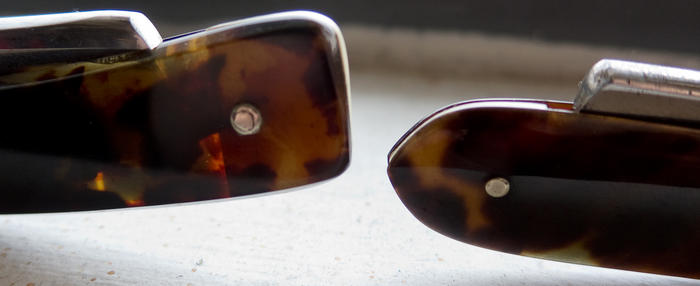
Sometimes it's hard to tell just from looking at it; this is where the pin test comes in. In razors there are some other clues, though these are by no way hard rules. On later real tortoise razors, the pinning is almost always collarless, just as with ivory. A lot of faux plastics are easy to tell once you've seen genuine tortoise. Often the dark parts have sharp edges; tortoise has rather blurred edges.
The horn varieties can sometimes be a little harder to tell, as they will smell very similar to tortoise on the pin test. But there's still some clues. Most obvious, the horn is painted or stained on the surface. This generally will not sink in to the extent that tortoise does. Here is an example of where a bug bite has revealed the blonde horn underneath the staining:
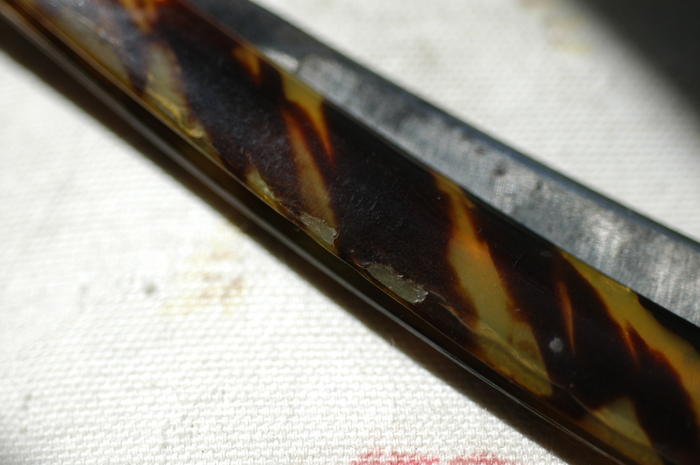
This can also be seen if you look on the reverse of the scale and see that the staining does not go all the way through. Further, these are still often pinned with collars:
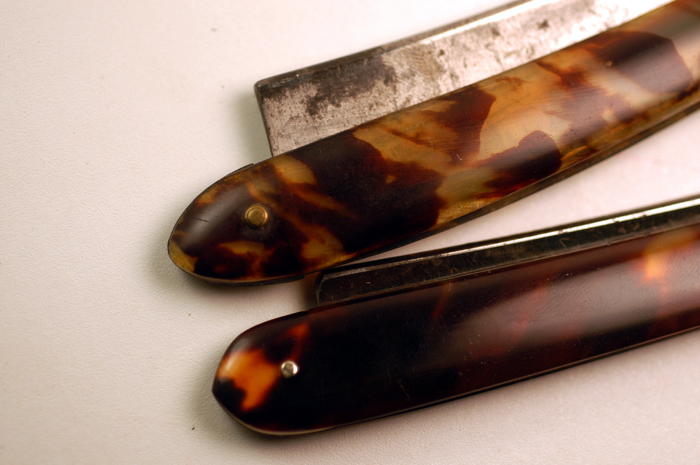
Sometimes, the pivot end of the scales will show the typical rough cut of later horn scales versus a thin shaped end, much more common in tortoise scales:
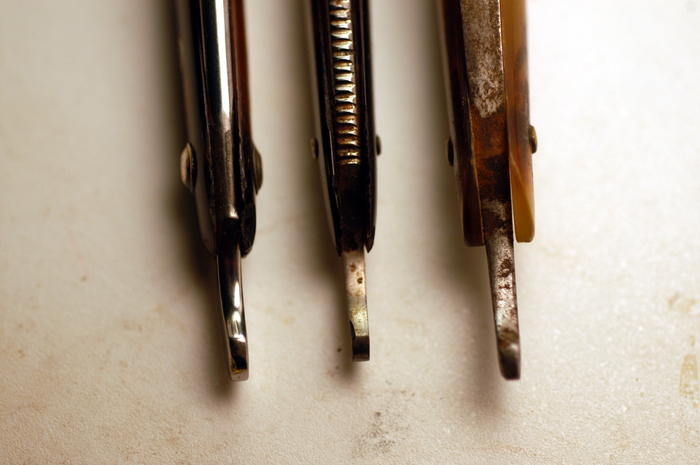
Sometimes also confused is mottled horn. This is not painted on the surface and will have variations in color throughout the scale; however, the patterns are very linear and more diffuse than tortoise:
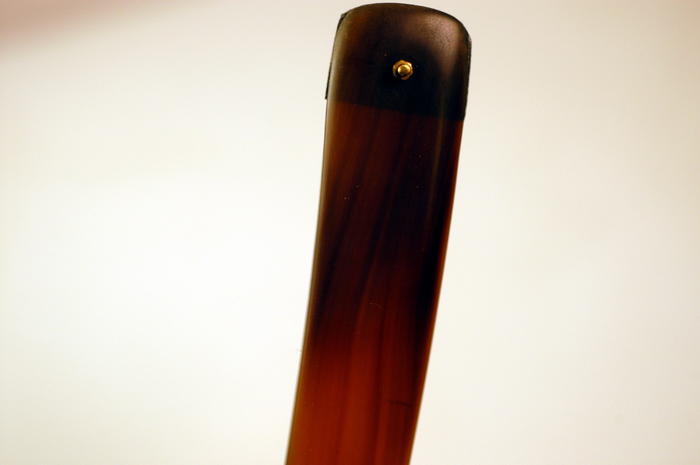
Last edited by ScienceGuy; 05-05-2013 at 10:23 PM.
-
The Following 21 Users Say Thank You to ScienceGuy For This Useful Post:
Cangooner (05-13-2013), carrolljc (06-23-2014), Fikira (09-11-2015), Frankenstein (04-06-2014), Geezer (09-12-2015), goldragon (05-19-2013), gooser (05-06-2013), HARRYWALLY (09-12-2015), jmercer (09-12-2015), manah (05-06-2013), Martin103 (05-05-2013), Matheus (09-14-2015), MikeT (07-03-2016), MODINE (05-18-2013), Mvcrash (05-06-2013), NewellVW (09-12-2015), pfries (05-06-2013), Phrank (12-26-2015), Renspen (05-09-2013), TCMichigander (07-08-2019), Voidmonster (05-05-2013)
-
05-05-2013, 10:22 PM #2

Part 2
Here are some pics of stained horn. You can see in some of them where the stain has been dribbled or smudged, sharp outlines on the dark spots, and how the spots are only on the surface:
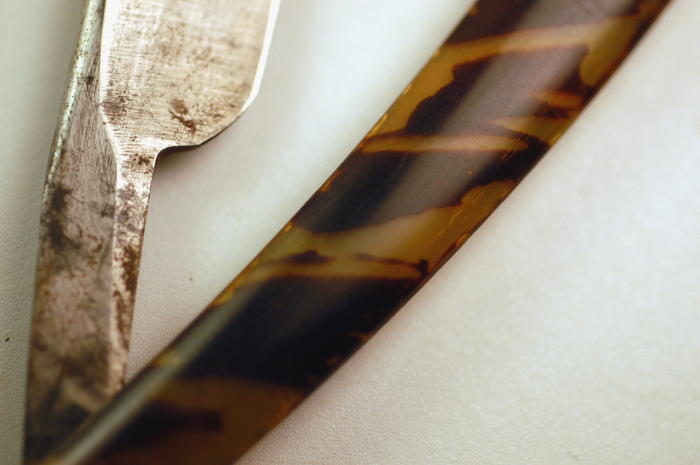
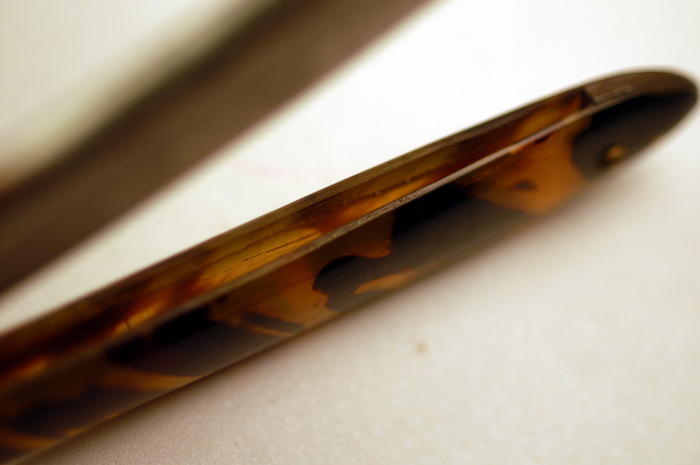
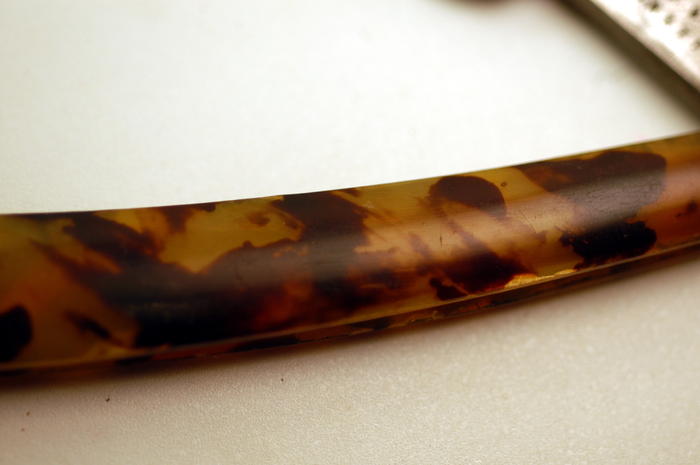
Here is a comparison with the genuine article:
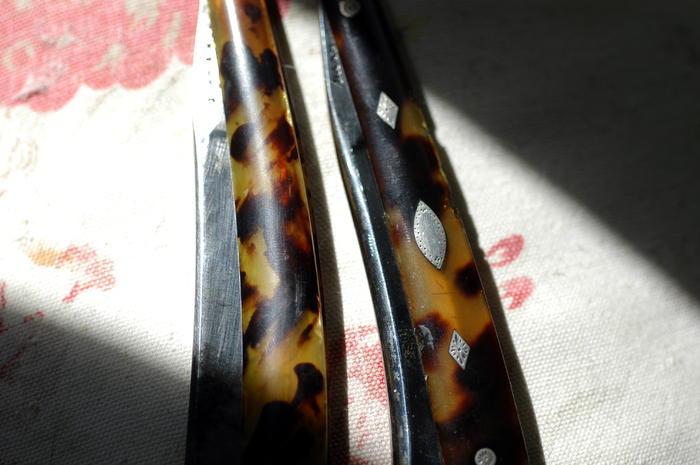
and in a different light:
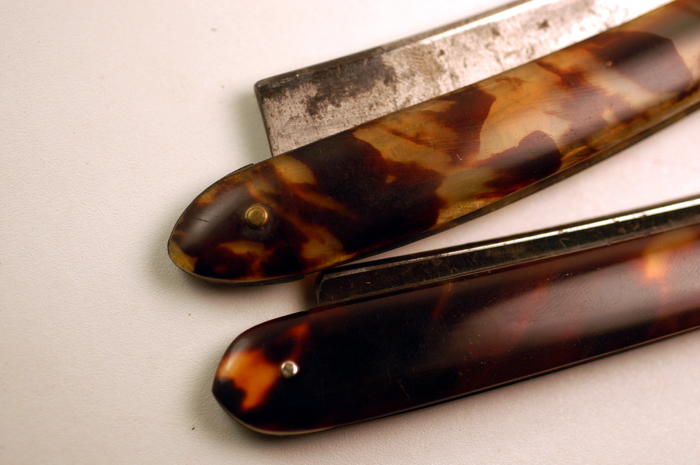
Another property of tortoise is the complexity of the dark colored areas. This piece is a shoehorn. Here's what it looks like without backlighting:
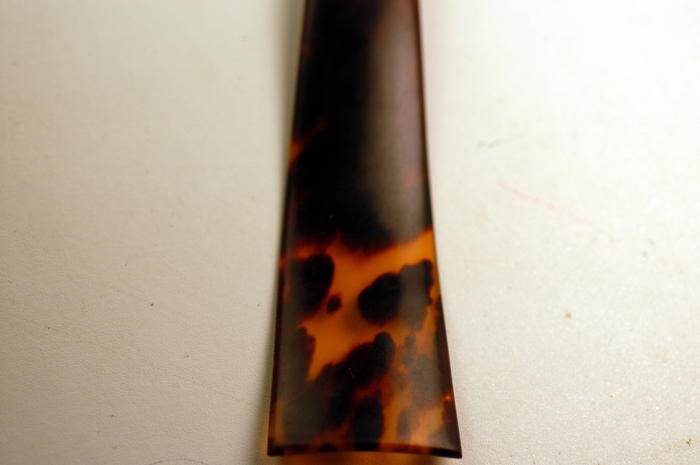
Now, with some backlighting. You can see how transparent the light parts are. Also notable is the 3d effect. Note how the splotches look blurry, where you can see the splotch moving through the thickness of the material.
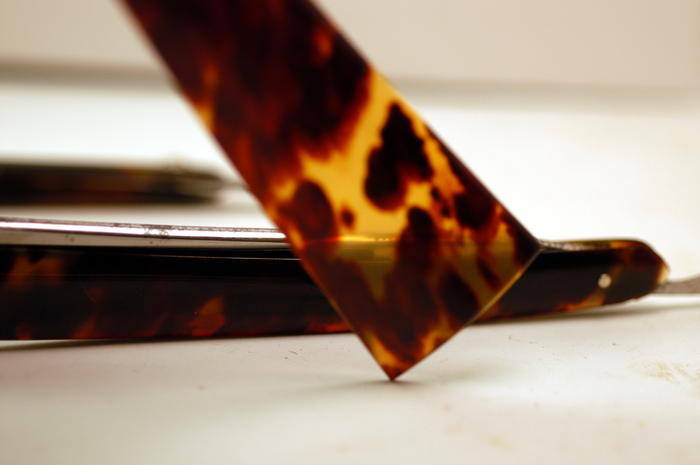
Then, when you really hold it up to the light, you can see the color structure in the dark parts. They're really like a watercolor painting in complexity. A lot of faux horn fails to capture this.
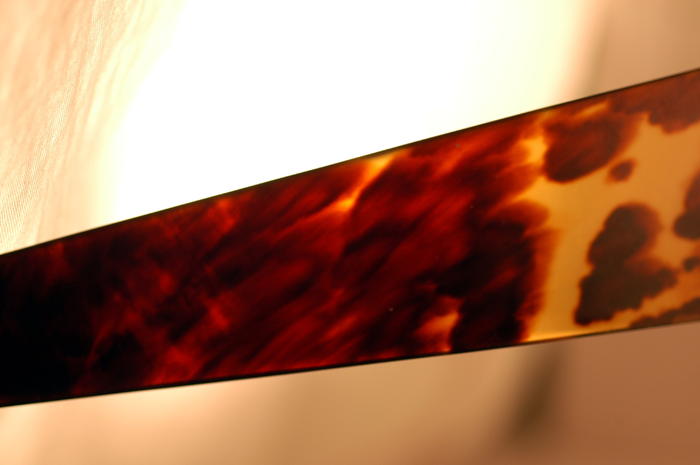
You can see this same effect on a razor scale too - this one looks almost black without backlighting.
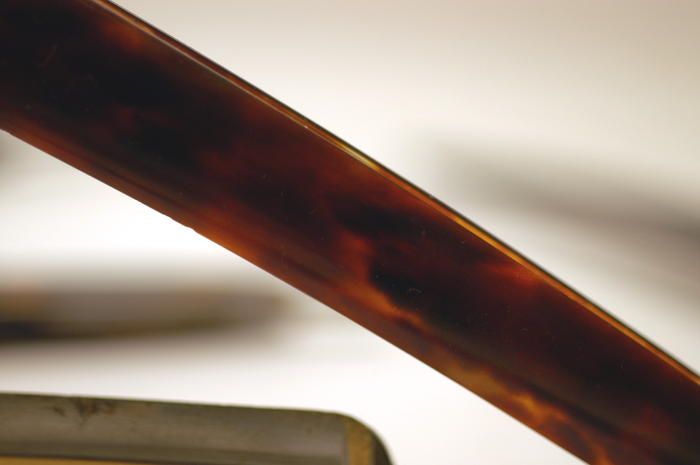
One last thing to note is the idea that tortoise darkens over time. This is a very slow and subtle process; a scale will not turn dark brown over the course of 300 years. There are still plenty of 1700s sets that have brilliant colors. The lighter parts may turn more of a golden hue, but in the timescales razors are concerned, that's about it, at least under reasonable storage conditions.
Hope that was helpful. If anybody wants more pictures or information, or this wasn't particularly useful, or is in the wrong place, let me know.
-
The Following 23 Users Say Thank You to ScienceGuy For This Useful Post:
BobH (05-05-2013), Cangooner (05-13-2013), carrolljc (06-23-2014), Chevhead (09-12-2015), Fikira (09-11-2015), Geezer (09-12-2015), goldragon (05-19-2013), gooser (01-19-2015), HARRYWALLY (09-12-2015), inoe (11-04-2015), jmercer (12-26-2014), manah (05-06-2013), Matheus (09-14-2015), MikeT (07-03-2016), Mvcrash (05-06-2013), NewellVW (09-12-2015), pfries (05-06-2013), Phrank (12-26-2015), pixelfixed (05-05-2013), Scotsman (05-18-2013), sharptonn (05-18-2013), Voidmonster (05-05-2013), Willisf (09-14-2015)
-
05-06-2013, 01:01 AM #3
-
05-06-2013, 03:55 AM #4Member

- Join Date
- Oct 2012
- Location
- Sydney Australia
- Posts
- 74
Thanked: 8
I can see them.
Some great info thank you.
-
05-06-2013, 04:06 AM #5Senior Member




- Join Date
- Nov 2012
- Location
- Across the street from Mickey Mouse in Calif.
- Posts
- 5,320
Thanked: 1185
I see them also. This is a great thread. Thanks ! I haven't been tempted by any with tortoise yet, but good to know when I do find one I might want.
Good judgment comes from experience, and experience....well that comes from poor judgment.
-
05-06-2013, 02:47 PM #6

Great info.....except now I need a Turtle Shell Scaled Razor....ughhhh.....
“Two things are infinite: the universe and human stupidity; and I'm not sure about the universe.”
Albert Einstein
-
05-06-2013, 07:30 PM #7

Two more useful bits: dermestid beetle damage and ultraviolet illumination.
First up, the larvae that do the damage look more or less like this:

There are many different species of dermestid beetle. While they're variable, most are very small. You'll want to be careful with google searches about them, as they get heavy use in forensics for stripping skeletons of all flesh -- and that includes humans. There are lots of pictures of that.
The beetles and their larva are after the keratin that makes up tortoiseshell (and horn, which I'll get to in a moment).
More importantly, this is what they do to tortoise shell:
(all of my images can be right-clicked and 'viewed' in larger size)


Under even minor magnification you can see that the 'bites' are actually many, many nibbles with a characteristic pebbled look. Every one of those tiny, tiny divots is about the shape of the mandibles of the beetles and their larva.
While it's very annoying for a lovely set of tortoise shell scales to have beetle damage, on newer razors it's actually an excellent diagnostic. By 1900 or so, surprisingly good copies of tortoise shell were made in celluloid, and then not much later Lucite. Celluloid faux tortoise has its own set of problems. The transparent amber portions of the plastic are extremely prone to breakdown and so -- like the Craftsman razor in the posts above -- you'll get mottled corrosion on the steel that corresponds to the lighter parts of the celluloid. Lucite is much more stable and can be quite attractive.
Celluloid and Lucite take damage very, very differently from genuine tortoise shell. They shatter and chip in a much more crystalline pattern. Stress fractures on the edge can look like delamination (which, unfortunately, I don't have any pictures of), but those fractures are always conchoidal.

That chip is from warped scales being dinged (repeatedly) by the blade, but you can see that the Lucite mockshell damage is very different from the real deal.
The beetles also eat horn (it's made of the same stuff as tortoise shell), and their bite marks look the same on that stuff. But you can see in the pictures in ScienceGuy's post of dyed horn that those bites can reveal that the coloration is only on the surface.
A good UV flashlight can be also useful. Celluloid and Lucite, under UV illumination, look far less homogenous than tortoise shell. The darker patches look separate.

From top to bottom are: Lucite, dyed horn (mockshell) and genuine tortoise.
In dimmer lighting, the Lucite (ironically, considering its name) looks much darker than either the mockshell or the tortoise (which of course doesn't actually come from a tortoise at all).
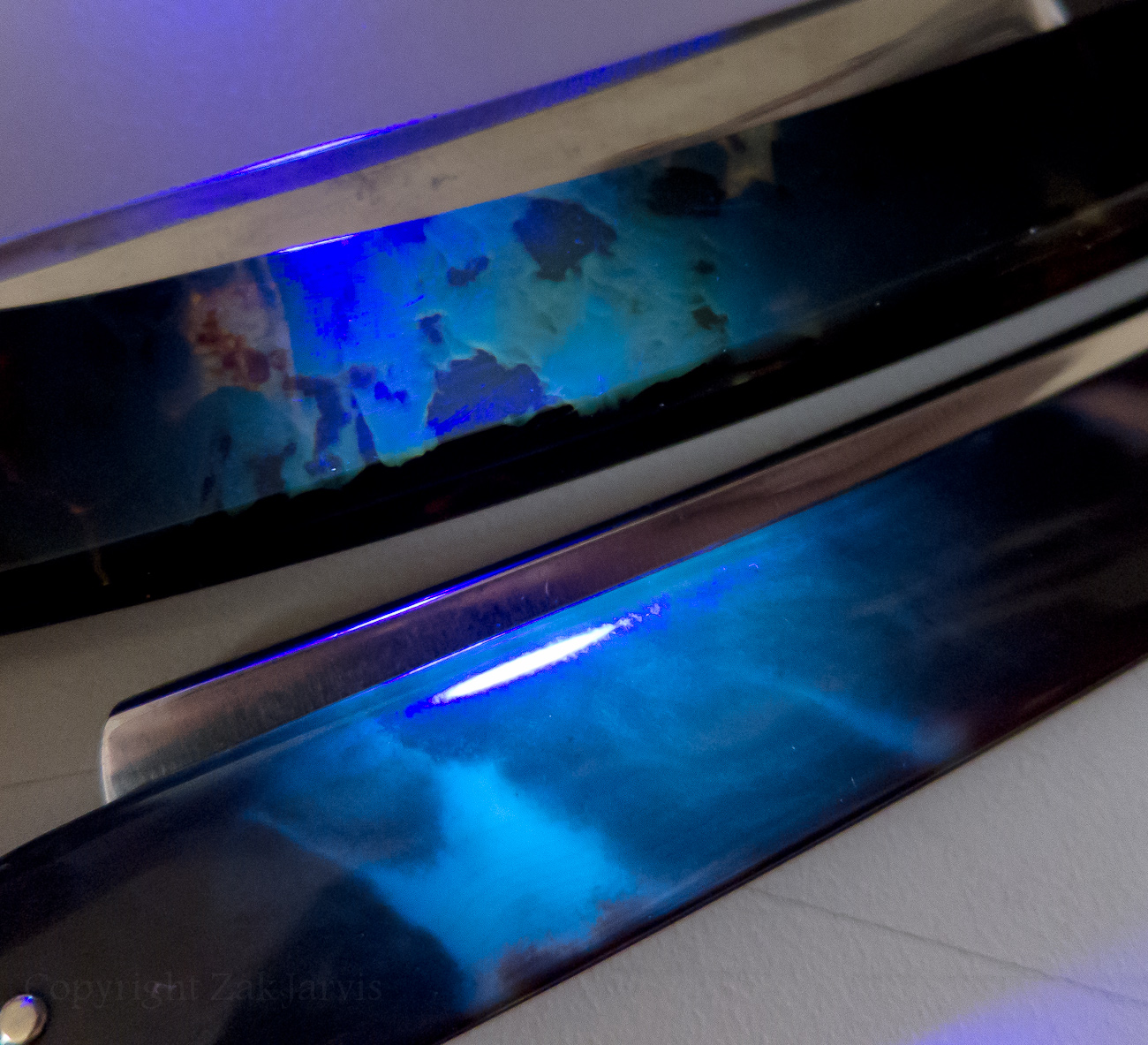
Under UV illumination, the Lucite is obvious compared to the tortoise.
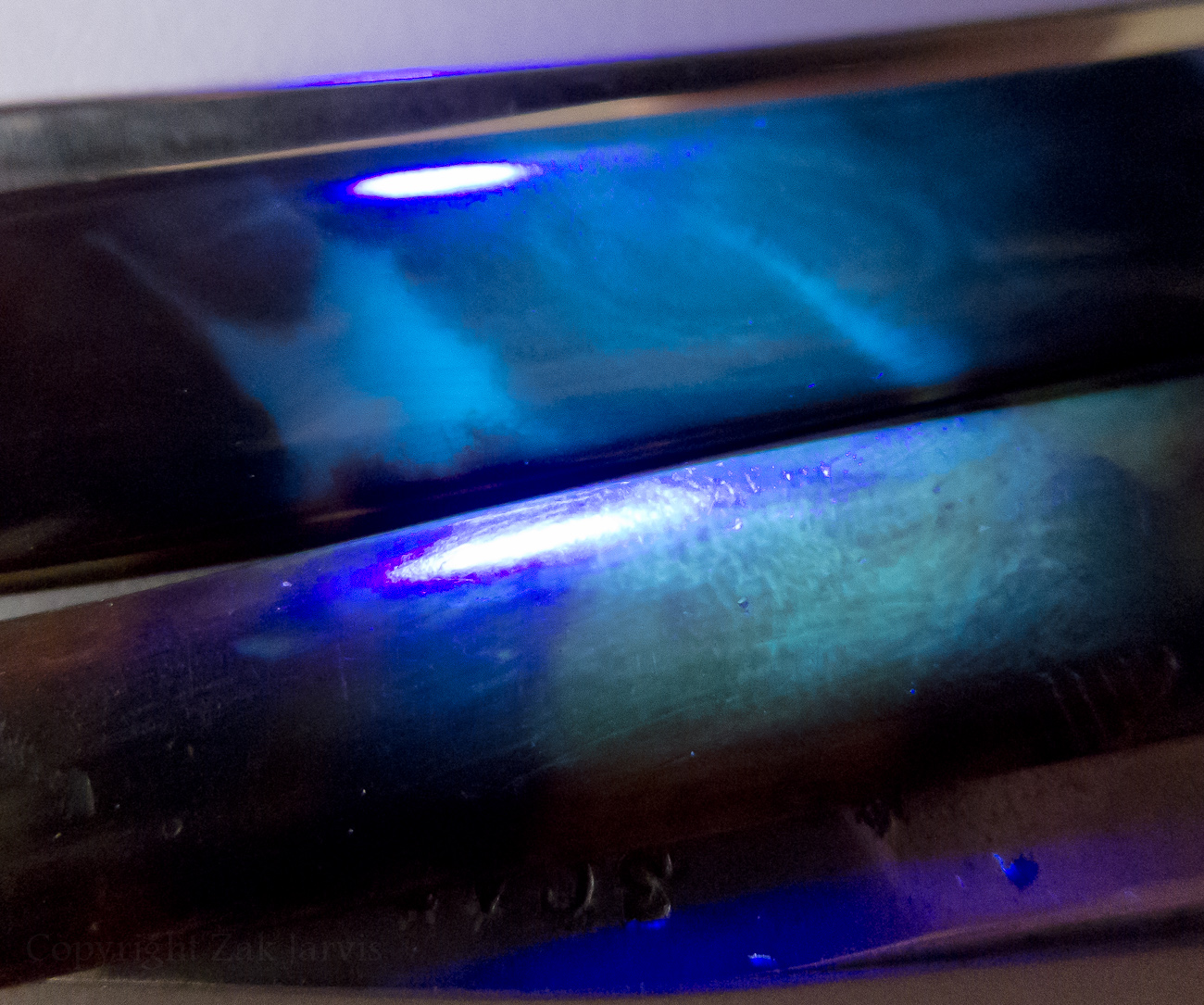
The difference between tortoise (on top) and mockshell (on the bottom) is more subtle under UV, but still visible.-Zak Jarvis. Writer. Artist. Bon vivant.
-
The Following 13 Users Say Thank You to Voidmonster For This Useful Post:
Cangooner (05-13-2013), Chevhead (09-12-2015), engine46 (09-14-2015), Fikira (09-11-2015), Frankenstein (04-06-2014), Geezer (09-12-2015), gooser (01-19-2015), JimmyHAD (05-06-2013), jmercer (09-12-2015), MikeT (07-03-2016), pixelfixed (05-06-2013), ScienceGuy (05-06-2013), Wullie (05-09-2013)
-
05-06-2013, 07:57 PM #8

Here is my gen torty complete with bug bites. Thanks Zak for confirming that is what they are. I wasn't 100% positive until you posted the photos above, since they don't look like the typical horn bug bites. Case Bros Springville, NY ;
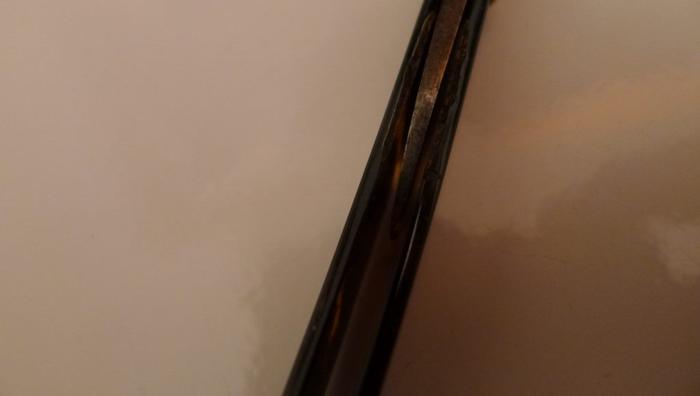
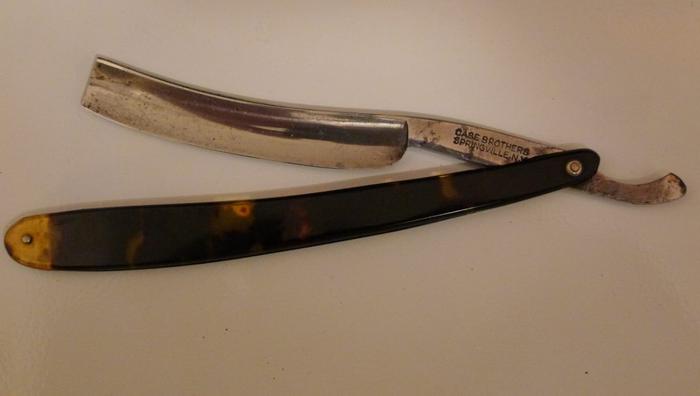
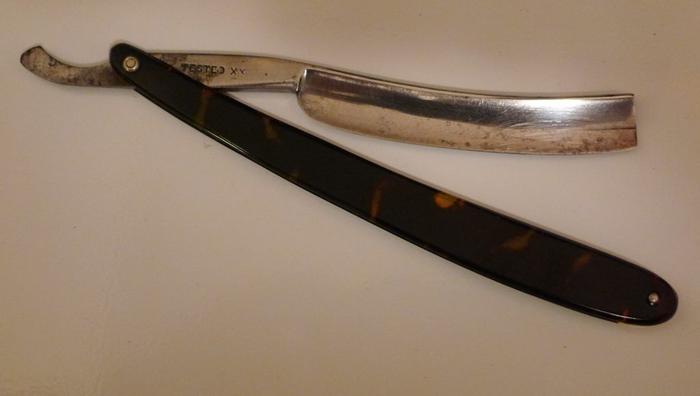
-
05-06-2013, 08:05 PM #9
-
05-06-2013, 08:11 PM #10


 93Likes
93Likes LinkBack URL
LinkBack URL About LinkBacks
About LinkBacks







 Reply With Quote
Reply With Quote

